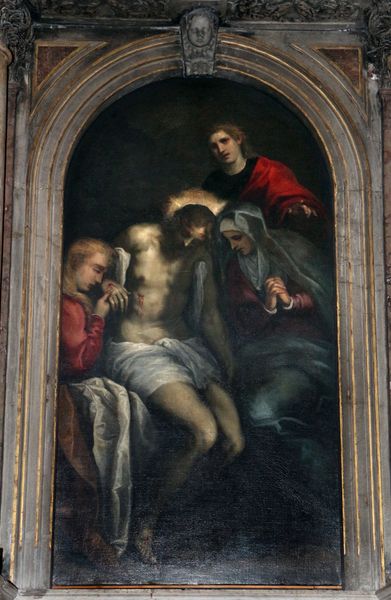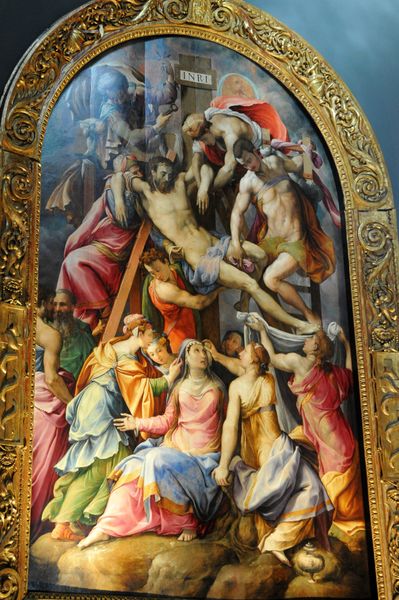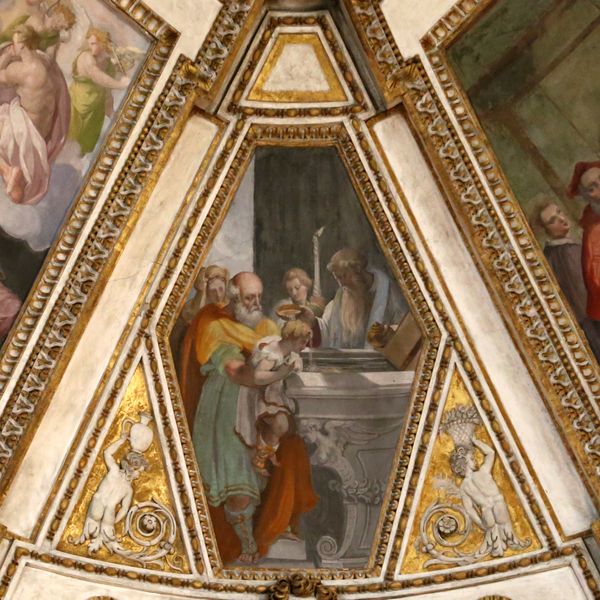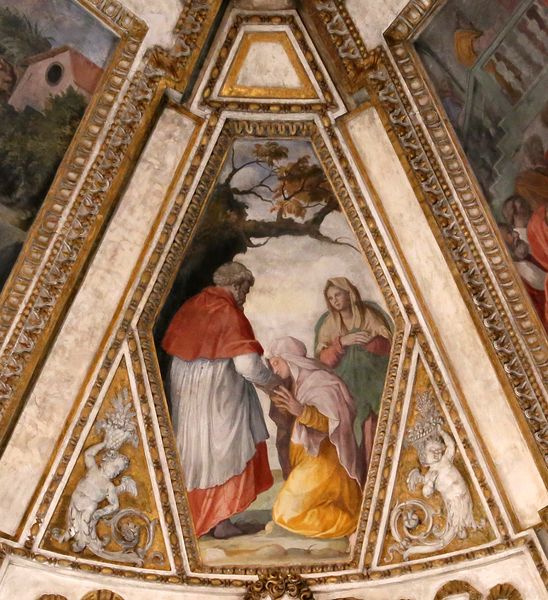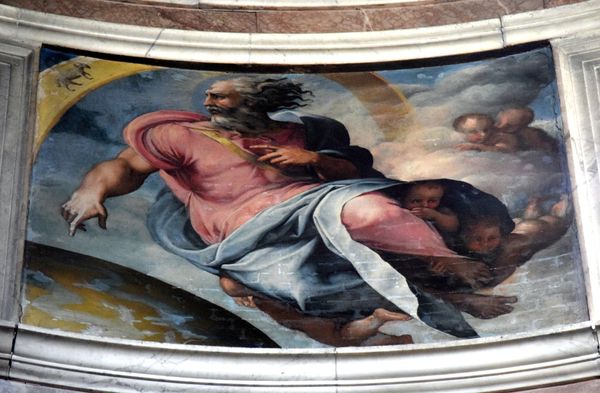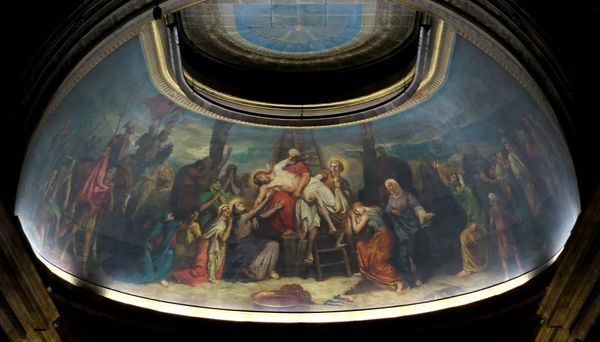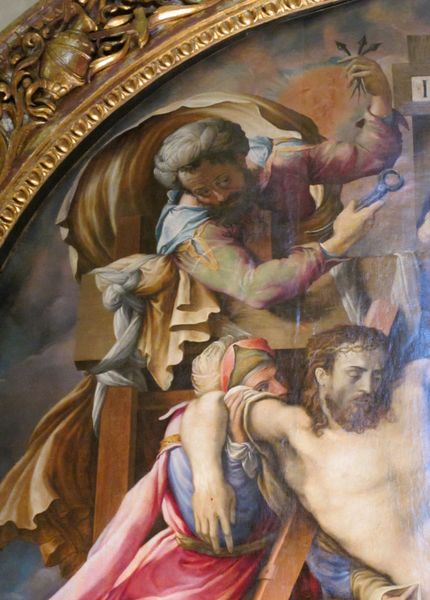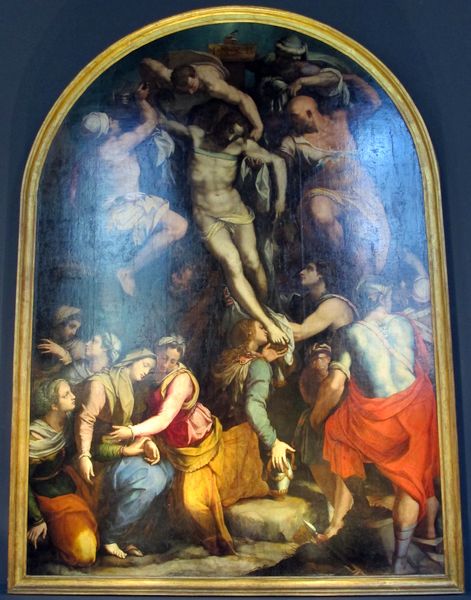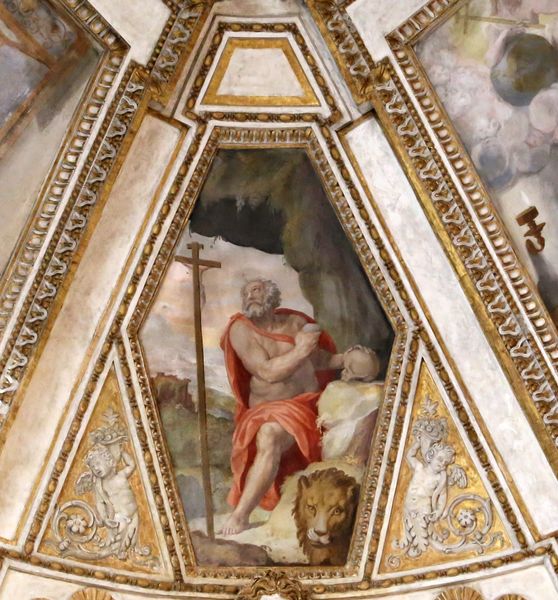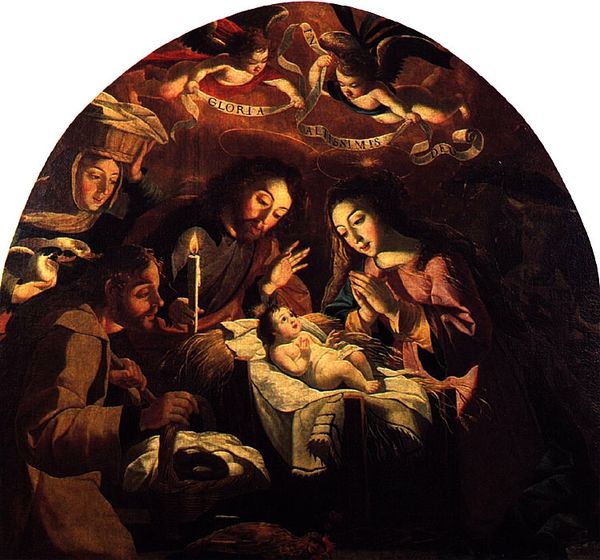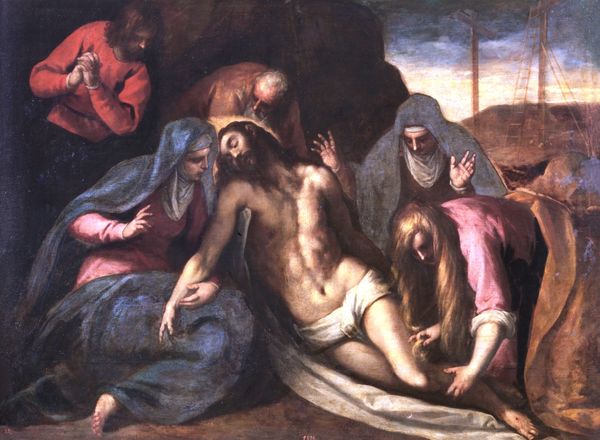
painting, oil-paint
#
allegory
#
narrative-art
#
baroque
#
painting
#
oil-paint
#
sculpture
#
figuration
#
oil painting
#
history-painting
#
italian-renaissance
Copyright: Public domain
Giulio Cesare Procaccini created this oil on canvas painting, titled “Transito della Vergine”, sometime between the late 16th and early 17th centuries. It depicts the death of the Virgin Mary surrounded by grieving figures. This artwork was made in Italy, during a period of intense religious and artistic change. The Catholic Church was trying to reaffirm its authority in the face of the Protestant Reformation. Artists were commissioned to create works that would inspire religious devotion and demonstrate the power and glory of the Church. Procaccini’s “Transito della Vergine” captures this spirit, but the composition of the painting draws heavily on earlier Northern European traditions, where death and grieving were more prominent subjects. The painting invites viewers to reflect on the importance of faith, the reality of death, and the promise of salvation. To fully understand the meaning and significance of this painting, art historians often consult a variety of sources, including religious texts, historical documents, and other works of art from the period. In this way, we see that the meaning of art is contingent on social and institutional context.
Comments
No comments
Be the first to comment and join the conversation on the ultimate creative platform.
